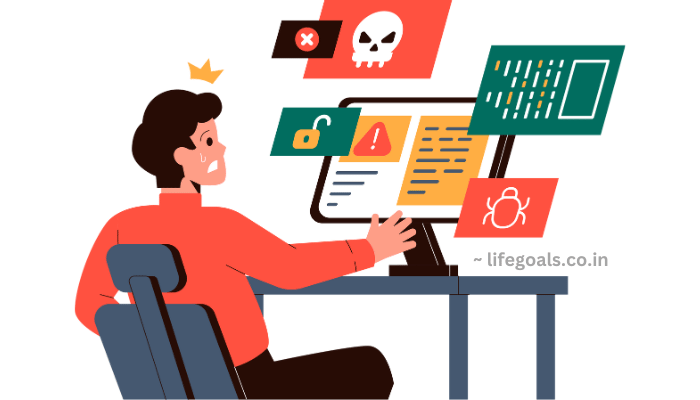Here’s How You Can Safeguard Small Businesses Against Hacking
Given that hacking nowadays has no boundaries, it becomes a clear and present danger not only to the consumer or retail customers but those enterprises handling billions of dollars and priceless data. Unlike past discussions at the Jankar Baniye series, which concentrated on malpractices that affect individual or small transactions of around some thousands, how hacking has poisoned for tiny business can also be extensive to crores and even lakhs.
Insight into Hacker World
Hackers are always looking for bugs that let them access billions of dollars. They were the hackers who spent years studying vulnerabilities in a mid-sized bank’s IT system — and learned to sneak in through malware. They also used social engineering, hacking international Visa and RuPay debit cards, and mules for the operations. Further, foreign collaborators may have been used for transferring the money abroad.
How They Pulled it Off
The cybercriminals began the attack by sending narrow-scope phishing emails to important employees in both the bank’s IT and cybersecurity departments. They managed to get their hands on unsuspecting employees who had access to valuable digital systems and they manipulated them through social engineering tactics. Slowly but surely, the hackers worked to attack all of them and turned an administrative control point. These types of key victories lead to the automation of malware steals directly in be bank switch itself or maybe they can make them an administrator at server level. This, in turn, gave them the right to authorise transactions with change dynamics of interaction between ATM server and Core Banking System (CBS) as well as SWIFT Server for International Remittances. They did this by cutting communications between the switch and CBS in a silent move so virulent it would establish a hauntological foundation for diabolical exploits ever after. They bypassed the CBS for transaction approvals tied to a specific range of debit cards after securing control over server-level administrator profile. The move was copied into the SWIFT process in which they manipulated requirements that international foreign currency wire transfers have.

With the preparatory technical work in place and functioning, cybercriminal operatives needed only to wait for 100s of money mule participants to launder funds stolen from more than 20 countries throughout North America. Merging the dark army The orchestrated pattern of marginalised laborers who were profiled to withdraw ‘illegally gained’ money using cloned debit cards. Marshaled with near-military diligence, the so-called “money mules” – some armed with as many as 100 cards each everywhere but their home countries – fanned out in orchestrated frenzies to exhaust ATMs worldwide.
Cybersecurity & Its Pillars
Cyber threats cripple many businesses, firms and organization; hence making moguls to safeguard their information with a powerful cybersecurity measures. This protects against financial risk, but moreimportantly it also defends brand integrity. While nowhere near as comprehensive a guide, this is how we can reverse engineer it to derive at Patch the system Password and Phish our own email account (3 of three main defenses against Ransomware attacks leading to potential data breach).
Patches: Installing updated software patches is crucial for operating systems as well as applications and software suites like Microsoft Office. These updates include security improvements that thwart new criminal tactics, locking the back doors hackers exploit.
Passwords: Do not use predictable passwords such as ”password123” The risk is further compounded when passwords are reused to grant access across multiple platforms. Rather they are to make your passwords strong and hard-to-guess by using a combination of uppercase letters, lowercase alphabets, numbers as well as special symbols (like Zyx@9876). Enable two-factor authentication for enhanced security.
Phishing: The top malware delivery method, phishing campaigns usually contain fraudulent emails sent from what appear to be the domains of respectable sources. These are the messages which lead to a yearning for people clicking on engaging but malicious links or downloading infected attachments. This training of employees, combined with regular data backup and a coherent action plan is crucial in fighting against phishing.
The bottom line is knowledge; having the three P’s, (Patches, Passwords and Phishing) present across an organization no matter who you are in terms of cybersecurity capability will always be a key part to bettering security. This shared understanding among all employees forms the backbone of a robust defense against cyber threats. You see, in cybersecurity knowledge is power.
Conclusion
The Digital era provides as much opportunity as threats to small business. This, alongside a more thorough understanding of what kind of tactics hackers use and how to avoid them or respond adequately will strengthen the security around your business’ data that is so crucial in keeping everything financially safe. Training staff and embedding a culture of cybersecurity awareness is also an important step toward protection from cyber threats.
FAQs
Q: What foundational tactics do they use to breach small businesses?
A: Phishing emails, social engineering and software vulnerabilities remain some of the most common ways hackers gain access to small businesses.
Q: What measures can small businesses implement against ransomware attacks?
A: Secure your environment from ransomware attacks by implementing MFA, updating and patching systems frequently, educating your employees about phishing scams and building resilient incident response plans.
Q: How is patching pivotal for the cybersecurity of any system?
A: Patches address vulnerabilities in software and operating systems, preventing hackers from exploiting these weaknesses to gain unauthorized access.
Q: What is a good password?
A: A strong password includes a mix of upper and lower case letters, numbers, and special characters. It should be unique and not reused across multiple platforms.
Q: How does providing education to the employees is a key for controlling any kind of cyber attacks?
A: Educating employees on recognizing phishing attempts, creating strong passwords, and understanding the importance of regular software updates helps build a culture of cybersecurity awareness and reduces the risk of cyber attacks.

